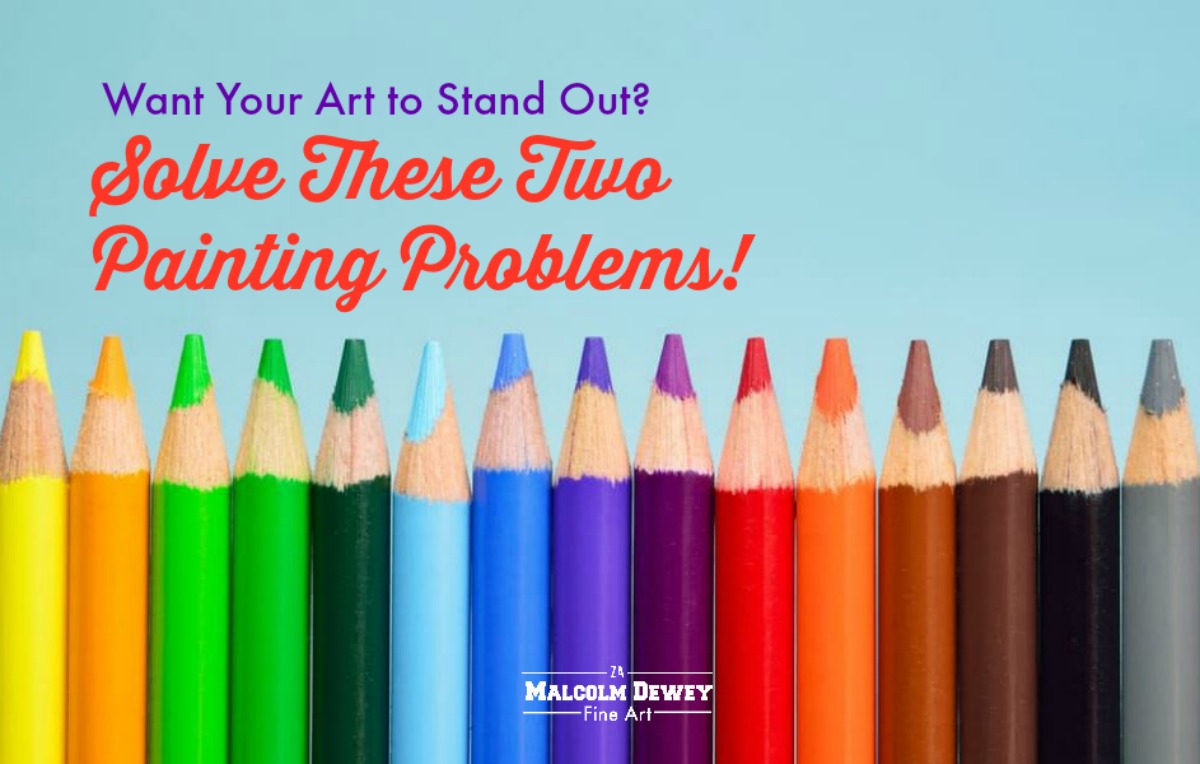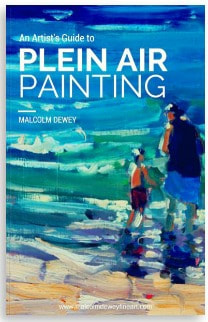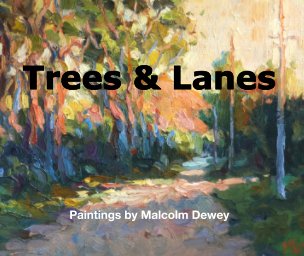|
Perhaps you have been painting for a few years. If you have discovered an affinity for painting, you are probably working at improving your painting, too. It stands to reason that you want to level up your skills to better express yourself. During this time, you may also find yourself frustrated when your progress seems to stall. In this article I want to explore the two most common issues that beginners struggle with Problem One: Not Simplifying the Scene Many students ask me about this on a regular basis. When you start painting the tendency is to include everything. All the little details get thrown in for good measure. Then one day you are looking at your painting and ask, Why is this and that in the painting? Every leaf, twig and bird has been painted on the trees! The Ah Ha! Moment When you look at master paintings you see simple big shapes and strong light and dark contrast. This makes them look powerful. This is a moment when the despicable Mr. Gru would say “Lightbulb!” As soon as you begin to see the subject as a simple series of light and dark shapes you will no longer be distracted by details. This sounds easy and the truth is that it is easy, provided you make it a habit in your painting process. Habits develop with repetition so it does take practice. Two Steps to Simplify a Scene Step 1: Squint – The old trick of squinting slightly when you look at the subject works wonders. By closing your eyelids slightly when you look at the scene you receive the following benefits: the scene’s details disappear leaving only the large shapes visible; the essential light and dark relationships between shapes are emphasized. Step 2: Do a Notan Sketch – Before jumping directly into painting the scene try making a small notan sketch. Think of a Japanese black and white print and you get the idea of a notan sketch. It is a graphic representation of the dominant dark or light shapes in the scene. Use a wedge tipped black marker to quickly “paint” in the dark shape in your sketch book. A 4cm x 6cm painting is all you need. The white paper provides the light shapes. This is the beginning of the simplification process. I must tell you that this single step profoundly changed my painting for the better. No exaggeration. If you want to see like an artist, then this method will be a bold step in right direction. This video will demonstrate the method for you. Problem Two: Not Seeing the Values Values are the degree of light and dark in the shapes making up the scene. This is sometimes referred to as tone, but value is the preferable name. Think of a black and white photo like the one above. It is a series of monochromatic shapes that can range from almost black, through many greys into almost white. The variations of value in nature are too vast to comprehend. Instead, we have simplified the range to nine distinct values in the Munsell scale. Why is this important? The most eye-catching quality of a good painting is the contrast between light and dark. We are instinctively drawn to light and dark contrast. It is probably hardwired in our minds, so it pays to see these value relationships and capture them in our paintings. Learn from the Masters Take a look at the old master paintings by Caravaggio and Rembrandt, for example. Light and dark contrast was a major part of their method. Often most of their painting surface is dark. Then BAM! A shaft of light illuminates an important part of the painting with dramatic effect. It is mesmerizing. Steps to Establish Values Look at the main shapes in the black and white photograph above. Focus on the extreme light and dark shapes. How does this influence the composition? Can you focus on part of the scene where the most light and dark shapes are? Then, eliminate the boring, unnecessary parts? Often the best scene has a dominant dark shape (for example a line of trees) and the smaller light shape to contrast with it (for example sunlit grass). Your notan painting will help you find these contrasting shapes. Then, use the Munsell scale to decide on the correct value for each of the shapes. If you can paint shapes in the correct value and place them in the correct place you will have an eye-catching painting; kind of like putting a jigsaw puzzle together using paint and brush. Hold up the Munsell scale at arm’s length and compare parts of the scene to the values on the scale. What number corresponds to the shape? That will be the value to match with your paint. In this way you learn to see value, mix paint to match and apply this to the canvas with confidence. Your paintings will never be the same again. You will never look at a scene quite the same again either. Conclusion It is a process of training mind and eye to see the essentials in every scene. Like I said earlier, solving these two problems made the biggest improvement to my painting. No more fussing over irrelevant details. Major takeaway: Get to the heart of the scene by simplifying it and use strong values for a powerful painting. Now you can express yourself better and your paintings will receive the attention they deserve. Ready to learn more? There are many lessons in my course Learn to Paint With Impact. that take you through the process of seeing values and simple shapes. I have a special offer exclusively for you. Plus, a bonus personal painting assessment and written critique when you join. Find out more. Do you struggle with simplifying a scene into the essential shapes and values? What do you think about these methods? Are you already using them? How else have you improved your painting? This article was first published in Sixty and Me
|
AuthorMalcolm Dewey: Artist. Country: South Africa Archives
June 2024
Categories
All
FREE
|
|













 RSS Feed
RSS Feed






